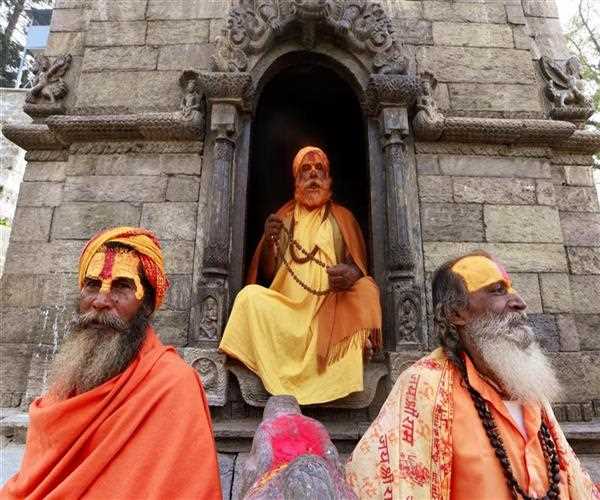Search here

Importance of Atharva Veda
Lord Visnu, in the form of Krishna Dwaipaana, observing the limited minds and abilities of man, distributed the Vedas to his four disciples to further impart the Vedic knowledge. Visnu Purana adds that he gave Rigveda to Paila, Yajurveda to Vaisampayana, Samaveda to Jaimini and Atharva Veda to Sumantu. During the Yajna, the Hota recites the Rigveda, the Adhvaryu recites the Yajurveda, the Udgata recites the Samaveda, and the chief priest of the Yajna, Brahma, recites the Atharva Veda.
Besides these names, the Atharva Veda has many other names. It is known as Brahma Veda because it is recited by Brahma monks in Yajna. But also because there is a debate about the ultimate reality, Brahman. It is called Bhisagveda because there is a discussion of disease and its treatment. It is also called xatraveda because it contains a mantra that describes the warrior's duty to protect the motherland.
Atharva Veda is divided into 20 Kansas and 36 phrapatakas. This Phra pataca contains 730 suttas (hymns), consisting of 5987 mantras.
Atharva Veda has 9 reviews of Sahas. These are Paippalada, Tau, Mauda, Saunakiya, Jajala, Jalada, Brahmavada, Devadarsa, and Charanavaidya. Hiervan zijn nu only de Saunakiya en Paipplata Saha este disponible. Paippalada Saha is in Odisha while Saunakiya Saha is in Gujarat.
The order and vowels of the mantras in the Suktas of the Atharva Veda are very well presented. 1 Most Ghanaian hymns have 4 mantras. Most of the hymns in Kanda 2 consist of 5 mantras. The 3rd Kanda hymn usually consists of 6 mantras. The 4th Hymn Kanda consists of 7-8 mantras. In Kanda 5 there are more than eight mantras in the hymn. Hymns in Kanda 6 usually consist of 3 mantras. The 7th Hymn Kanda usually has one or two mantras.
Hymns 8 to 12 of the Kanda have a wide variety of themes. From Kanda 13 to Kanda 20, the hymn is also very long, but the unity of the theme stands out.
Atharva Veda covers a very important subject. Some of the topics discussed in detail are Brahman: Detailed spiritual discussion of Brahman, ultimate reality, realization, and liberation of Brahman, the concept of jibatma, the concept of Virat, Hiranyagarbha, and many more.
Constitution: This is another important theme of the Atharva Veda. The election of a ruler, duties of a ruler, the ideal form of government, justice and punishment, army, war, victories, and many other related topics were discussed at length.
Brotherhood and Harmony (Samanasa): Religious brotherhood, harmony in society, good relations in families, and good relations between kingdoms, and similar subjects are also dealt with in the Atharva Vedas.
Diseases and Treatments: One of the main contributions of the Atharva Veda is the discussion of various diseases, their causes, and treatments. Various herbs, mantra therapy, water therapy, solar therapy, psychotherapy, and other topical discussions are noted in the Atharva Veda. The Indian health system of Ayurveda is considered a sub-branch (Upanga) of the Atharva Veda.
Health and Longevity: Atharva Veda emphasizes various methods for health and longevity. Atharva Veda says that man should strive to live to maturity (Jivema saradah satam). Different gods have mantras for health and longevity. Wearing jewelry and tying magical threads around the wrists and neck are some of the steps taken to bestow health and longevity on the gods.
Shanti Karma: Atharva Veda prescribes taking many steps to get rid of unwanted events, calamities, bad dreams, and bad omens. This action is called Shanti Karma.
Actions of Prayaschitta: Introspection, confession of sins, sacrifices to avoid evil consequences (Yajna), etc., various incantations to propitiate the gods, various rituals for the welfare of children born in evil nakshatras, etc. This is also an important modality in the Vedas. was discussed.
Measures to Overcome Unwanted Elements (Abhichara Karma): Defeat enemies, demons, and evil spirits. Various countermeasures are discussed, including killing (Marana), suppression (Vasikarana), paralyzing (Stambhana), and distraction measures. (Uchhatana), etc., can suppress the inauspicious element. Atharva Veda is misunderstood and misinterpreted by many Western and Indian followers as full of black magic and witchcraft. This is not true at all. Abhidharma mantras (mantras for controlling unwanted forces) exist, but their number is very limited.
Meanwhile, the Atharva Veda is rich in spiritual and philosophical knowledge, patriotism, medical knowledge, and a variety of useful knowledge about daily life. Simply put, the Atharva Veda incorporates the knowledge of the four goals of life: Dharma, Artha, Kama, and Moksa.
This point of view is especially emphasized by Western translators. Trays are classified into three types of mantras: prayer mantras, sacrificial mantras, and lyrical mantras, most of which are grouped into Rig, Yaju, and Samaveda.
That is why people have this misunderstanding. The Atharva Veda has received wide recognition from great figures like Manu, Yajnavalkya, Vyasa, Usana, and Shankaracharya and can never be excluded from the ranks of the Vedas. Moreover, the Atharva Veda must be recited by the Brahma priest during the ritual, without which the Yajna is incomplete.

Student
An inquisitive individual with a great interest in the subjectivity of human experiences, behavior, and the complexity of the human mind. Enthusiased to learn, volunteer, and participate. Always driven by the motive to make a difference in the sphere of mental health - and normalize seeking help through a sensitive and empathetic approach
Join Our Newsletter
Subscribe to our newsletter to receive emails about new views posts, releases and updates.
Copyright 2010 - 2025 MindStick Software Pvt. Ltd. All Rights Reserved Privacy Policy | Terms & Conditions | Cookie Policy